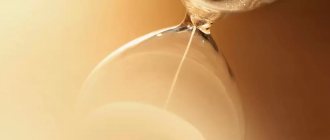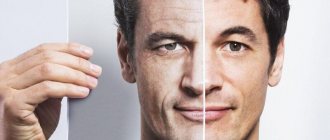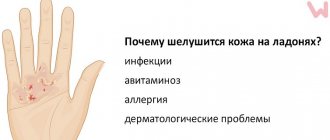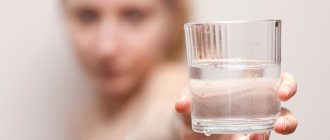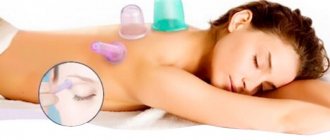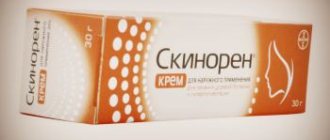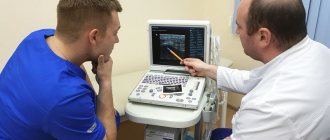Anti-aging. Prevention of aging as a norm of life
What is anti-aging?
Translated from English, anti-aging means the fight against aging. Therefore, all concepts associated with the word “anti-aging” refer to the prevention and slowdown of age-related changes that occur in the body. When it comes to anti-aging therapy, many associate it with cosmetology. But this area of science is aimed at correcting external manifestations of internal problems. Anti-aging medicine focuses on identifying a person’s predisposition to various pathologies and preventing their development. Prevention of aging includes a whole range of measures, an important part of which is laboratory diagnostics.
Myths about the search for the secrets of eternal youth
People have been trying to find miraculous remedies to help preserve undying youth from time immemorial. They tried to slow down aging in a variety of ways. In the search for the secrets of eternal life, myths and legends were born. For example, Cleopatra drank a “pearl cocktail” before dinner. The ancient Greek historian Herodotus mentions a fountain of youth that restores youth to anyone who drinks from it. Magic recipes can be found in folk legends. Let us remember the rejuvenating apples that saved fairy-tale heroes from illnesses, the twelfth labor of Hercules from the myth about the theft of three golden apples of eternal youth from the Garden of the Hesperides.
The theme of inexhaustible youth is found in literature. The plot of the science fiction play “The Makropoulos Remedy” by Karel Capek is built around the secret of non-aging. The face depicted in the portrait “ages” for the hero of Oscar Wilde’s novel “The Picture of Dorian Gray.” Joseph Cartaphilus from Jorge Luis Borges's story "The City of the Immortals" finds a river that gives eternal youth. The heroes of the story “The Elixir of Longevity” by Honore de Balzac and the novel by William Godwin “Saint Leon. Tale of the 16th century."
Realities of the modern world
According to forecasts, by the middle of the 21st century, the percentage of the world's population over the age of 60 will reach 22% (about 2 billion). Scientists have proven that at the age of 65, a number of diseases (there are approximately 92) associated with aging are detected in a person. The most common are: diseases of the cardiovascular system (arrhythmia, myocardial infarction); diseases of the central nervous system (Alzheimer's disease); menopausal and senile osteoporosis.
At the same time, it was found that representatives of Japan, France and Switzerland feel 65 at the age of 76, residents of Afghanistan - at 51, Papuans - at 45. In people of the post-Soviet space, gerontological diseases begin to manifest themselves at approximately 59 years.
In the modern world, the number of diseases associated with oncology, obesity, etc. is increasing. At the same time, society dictates its own rules. Looking much younger than your age is becoming not just a fashionable trend and a privilege for the lucky owners of long telomeres, but a necessity for a person’s successful functioning in society.
Successful aging concept
With the development of the economy and the advent of new technologies that can influence the increase in life expectancy, old age is no longer associated with death and disease. This led to the emergence of the concept of good aging in the late 1950s. American psychologist Robert Havighurst introduced this concept in an article of the same name in the first issue of The Gerontologist magazine. He associated successful aging with satisfaction with the present and lived life.
In 2015, the entire February issue of this magazine was devoted to an in-depth examination of how far science has come in this area. Let's not dwell on all the signs of successful aging. In general, this concept applies to a person if he does not have chronic diseases and functions effectively on a physical and psychological level.
The knowledge accumulated over years of research has shaped the field of anti-aging medicine. The need to formulate anti-aging strategies is no longer in doubt.
The truth about human aging
In the information space, new data on the issue of anti-aging strategy and the ability to influence the processes of withering appear in geometric progression. Let us pay attention to the essay “The Truth of Youth is Not the Truth,” which became a bestseller. In it, a group of scientists briefly outlined the main points of the grandiose work “The Truth about Human Aging.”
Previously, aging and a large number of chronic diseases were associated with deficiencies in neuroimmunoendocrine interactions. But later it turned out that this is also influenced by factors such as genomic instability, oxidative stress, telomere shortening, loss of balance in the protein composition of cells, hereditary diseases, unhealthy diet, disruption of intestinal microflora, etc.
Women are luckier in the fight against old age. They have a weapon in the form of estrogen, which partially mitigates the effects of oxidative stress and promotes the production of prostacyclin and nitric oxide. All this has a beneficial effect on the prevention of disruption and loss of endothelial function, which provokes diseases characteristic of aging.
At the same time, the fair half of humanity after 40 years experiences a decrease in the level of the female reproductive hormone, which is directly related to the attenuation of reproductive function. This signals the start of the wilting mechanism. Skin density decreases, collagen production decreases, which leads to rapid aging of the dermis. Estrogen deficiency entails changes in organs not related to the reproductive system. This negatively affects appearance, the attractiveness of which is so important for any woman. The skin loses its elasticity especially quickly at the final stage of menopause.
Diagnostic complexes for women
Thanks to anti-aging diagnostics, the doctor develops a picture of gerontological changes. Therefore, laboratory tests are important. Medical center specialists are developing various diagnostic programs. For example, one well-known Russian laboratory offers several research options: basic and advanced. Since the symptoms of aging rapidly appear in patients during menopause, a special complex for postmenopausal women is provided for them.
Oxidative stress
Up to 95% of O2 in the human body is transformed by mitochondria into H2O. The remaining oxygen molecules turn into free radicals. Excessive concentrations of such pro-oxidants lead to oxidative stress, which has a detrimental effect on health and accelerates the aging of the body. To understand the danger of the consequences of this process, it is enough to note that oxidative stress leads to the death of three hundred million cells per minute!
But the human body is endowed with an antioxidant defense system (AD). Thanks to it, the toxic effects of free radicals are prevented. Scientists are studying antioxidant factors, looking for drugs and food products with a similar effect of AS. It has been revealed that proper nutrition, caloric restriction, consumption of foods and drinks high in antioxidants slow down the aging process and have a beneficial effect on human health.
But before you start helping your body fight free radicals, you need to assess your overall antioxidant status. For this purpose, a whole complex of laboratory tests called TAS (Total antioxidant status) has been developed. It shows how protected your body is from the negative effects of pro-oxidants.
These apples demonstrate how oxidative stress destroys cells, causing premature aging and disease.
Main directions of anti-aging medicine
Today, anti-aging medicine is based on an individual approach, including predictive analytics and preventing the occurrence of an unfavorable condition in the patient.
Genetic analysis helps identify the disease at an early stage. Addressing obesity problems by improving your diet and increasing exercise activity prevents premature aging. Normalization of metabolism also helps with this, an important component of which is the correction of the endocrine system.
Diagnostics and its correct reading give a person the opportunity to avoid diseases and other problems that negatively affect the course of life processes. Research is carried out using various methods: special questionnaires, examinations, general clinical tests. Depending on the results obtained, a set of effective preventive measures is formed aimed at slowing down decline and improving the quality of life. It is important to know that there are no uniform programs in anti-aging medicine. A unique course is developed for each patient, based on laboratory test data.
Anti-aging medicine is not only about aesthetic and internal rejuvenation. In fact, this is a new way of life, which involves giving up bad habits, developing a positive outlook on life, strengthening the body with moderate physical activity, changing the quality of nutrition, and minimizing stressful conditions. Therefore, anti-aging is medicine for the conscious.
Biomarkers of aging
Biological aging is caused by the deterioration of body systems. Thanks to biomarkers, it is possible to find out what condition a person’s organs are in. These indicators reflect the level of risk of dying from age-related diseases. Today there is no universal definition of biomarkers of aging, but among the key indicators are: blood pressure, body mass index, ECG, blood test for the content of certain vitamins and substances in the body, ultrasound, mammography, studies for the presence of mutations in genes, telomere length and etc. Biomarkers can be adjusted, preventing a number of diseases and increasing life expectancy.
BRITISH PANEL OF BIOMARKERS FOR HEALTHY AGING
Is it possible to influence the rate of aging?
Nothing is eternal under the Moon.
Whether we like it or not, the aging process is irreversible. However, there is some good news. Each of us can stay healthy and look younger. To do this, it is important to know the causes of wilting and how to eliminate them.
It is a well-known fact that stress has a negative impact on well-being. Drinking alcoholic beverages will not add beauty, unless it is a glass of red wine for women, and two for men. Lack of physical activity will not help slow down the aging process. Excessive consumption of saturated fat will lead to heart disease. According to statistics from developed countries, smoking shortens life by 13 years. Poor ecology and prolonged exposure to sunlight do not contribute to rejuvenation. Lack of sleep will not give you a blooming look. Excess weight has a negative impact on health. Excess sugar consumption leads to adverse consequences.
The conclusions suggest themselves. Don't worry about trifles, find a hobby you like that will relieve stress. Do not drink strong drinks. Play sports! Start eating smarter. If you smoke, give up this bad habit. Go out of town and take a walk in the forest. Use sunscreen. Follow a daily routine, sleep 8 hours a day. Adjust your weight. Give up sweets.
And let us note once again that laboratory tests play a major role in slowing down fading, making it possible to identify dysfunctions of certain body systems long before their clinical manifestation.
Aging cannot be cured, but it can be delayed and this final stage of ontogenesis can be spent living a full, active life. And laboratory anti-aging studies and subsequent preventive measures will help with this.
INFLUENCE OF DIET ON SKIN AGING
Cosmetics alone cannot provide complete care and hydration; the skin needs a regular supply of nutrients. A balanced diet helps delay the process of premature aging, including the skin. Maintaining a regular drinking and sleeping schedule is common, but has a very positive effect on a person’s appearance. During sleep, intensive skin regeneration occurs, cleansing of dead cells.
To maintain youth for a long time, it is necessary to consume sufficient amounts of vitamins, minerals and essential fatty acids. These substances naturally nourish the epidermis and allow the skin to better withstand the aggressive influences of the outside world.
An effective combination of healthy foods helps the body rejuvenate and remove the negative effects of smoking, sweets, and drinking. Especially suitable for this purpose is proper nutrition with the addition of products containing collagen, which helps produce elastin and hyaluronic acid in large quantities.
WHEN DO WE GET OLDER?
With the onset of menopause (and the associated decrease in hormones), hypertrichosis appears - hair above the upper lip and chin. Subcutaneous fat begins to move from the middle of the face, creating a double chin, and the skin on the eyelids sags. Wrinkles on the forehead, around the eyes and mouth become deeper and more noticeable. Aging begins.
After forty years, the complexion becomes pale, the skin becomes thinner. This is due not only to external environmental influences, nutrition, heredity, but the rapidly decreasing hormonal activity especially affects the aging process of the skin. The regeneration of the epidermis slows down while the production of collagen and elastin fibers decreases. The body deteriorates and ceases to perform its biological functions, which leads to sagging skin and changes in facial contour. For this reason, it is necessary to use special cosmetics designed for mature and aging skin.
WHEN DOES SKIN AGE AND WHEN DOES IT RECOVER?
Some women believe that since cosmetologists recommend especially intensive skin care in the evening and at night, this means that the skin wears out more at night, and that is why it is better to make masks in the evening, and apply nourishing creams at night.
It turns out that everything is happening the other way around. During the day, the skin is more susceptible to negative influences: sun rays, frost, wind, heat, stress, emotions and facial expressions - all this leaves its marks on beautiful faces.
But at night, the process of restoring tired skin occurs, and it happily accepts care: cleansing, masks, creams. Before going to bed, the effects of various kinds of stress are removed, the skin is soothed, nourished, and restored to youth and beauty.
By the way, vitamins are better absorbed in the morning. This usually applies to fruits and vegetables taken orally, but the skin also needs to be nourished and this is where masks will come to the rescue. To improve the condition of the skin, take vitamin A, which also has a positive effect on vision, the condition of teeth and bones.
I have a friend who won’t go to work without making a mask in the morning. And I have to admit, it looks just great. There is only one conclusion: don’t be lazy about cleansing and nourishing your skin at night, and in the morning make a refreshing mask that fills your skin with vitamins. The day will go much better. To remove excess stratum corneum from the face, it is recommended to exfoliate dead skin cells once a week using scrubs and peels.
VIOLATIONS OF PROTECTIVE MECHANISMS
The skin is protected by a lipid (epidermal) barrier; it prevents moisture from evaporating and microbes from penetrating. The effectiveness of the epidermal barrier depends on a complex physiological balance in which nutrients play an important regulatory role.
The stratum corneum on the surface of the skin, the first protective element of this barrier, in case of its violation:
- The skin no longer retains moisture, and it begins to evaporate rapidly. Dryness, tightness, discomfort, peeling, red spots appear, elasticity disappears.
- Ultraviolet radiation from the sun releases large amounts of free radicals into the skin. This oxidation process damages cells, destroys collagen and elastin fibers, and skin hypersensitivity occurs.
- Allergens, toxins and microbes freely penetrate the epidemic barrier. Skin inflammation, acne, rashes, and dermatitis appear.
The skin is subject to genetically programmed aging from birth. Each cell of the body has a limited lifespan, which is determined by genes. For example, fibroblasts produce collagen and elastin fibers in the skin and undergo only 30-50 division cycles during their life. After this, they turn into mature fibrocytes and lose the ability to reproduce substances necessary for skin rejuvenation. Each person's fibroblast life process is different, which is why some people have fewer wrinkles at the same age than others.
In aesthetic medicine, since the 90s, rejuvenation has been carried out using regenerative biotechnologies. Restoring the skin with fibroblasts introduced into the body artificially causes fibrocytes to start working (they seem to return to their original state). Many famous people use the cellular rejuvenation technique. The cost of such a procedure abroad is from 5 to 7 thousand dollars. The Russians even came up with a new type of tourism - going to Europe and America to rejuvenate with fibrocytes.
B vitamins: where are they found and what do they affect?
Despite their diversity, all B vitamins have one thing in common: they help improve metabolism in the human body and normalize the functioning of the immune and nervous systems.
All these vitamins are water-soluble and are quickly eliminated from the body without accumulating in it. This means that it is necessary to replenish their reserves by taking special vitamin complexes and not forgetting about foods rich in these substances.
An important fact: doctors claim that taking B vitamins in combination has a much more noticeable effect than taking any one “variety” of B vitamins.
Therefore, let's figure out what we should eat in order to reinforce the body with useful substances, which B vitamins produce and what is remarkable about each of them.
B1 (thiamine) - energy vitamin
Benefit: Helps convert fats, proteins and carbohydrates into energy. Strengthens the nervous system and improves thinking abilities.
Contains: buckwheat and oatmeal, cereal shells, wholemeal bread, green peas, asparagus, pine nuts.
B2 (riboflavin) - beauty vitamin
Benefit: takes part in all metabolic processes of the body. Improves the condition of the skin, mucous membranes, nails and hair (hence the name “beauty vitamin”), is good for vision, and promotes the production of hemoglobin.
Contains: meat, offal (liver, kidneys), chicken eggs, mushrooms, cabbage (white cabbage, broccoli, etc.), pasta, white bread, refined rice, buckwheat, cottage cheese.
B3 (nicotinic acid, vitamin PP) - vitamin of synthesis and metabolism
Benefits: helps synthesize fats and proteins, promotes the production of energy from food, reduces the level of “bad cholesterol” in the blood. In addition, vitamin B3 helps normalize venous and blood pressure and stimulates the functioning of the cardiovascular system.
Contains: fish, milk, egg yolk, nuts, liver, kidneys, yeast, buckwheat, green vegetables, legumes, meat, potatoes.
B4 (choline) - a vitamin responsible for blood sugar
Benefits: this vitamin is important for the normal functioning of the nervous system and is useful for stress. In addition to its calming effect, B4 will help your thinking abilities. But most importantly, this vitamin regulates blood sugar levels. It also normalizes fat metabolism, which has a positive effect on your weight.
Contains: offal (kidneys, liver), egg yolk, dairy products (cheese, cottage cheese), cabbage, spinach, legumes, various unrefined vegetable oils, meat, fish.
B5 (pantothenic acid) - healing vitamin
Benefits: helps wounds heal faster, promotes the synthesis of antibodies, fatty acids, hemoglobin, and participates in the processes of cellular energy production.
Contains: poultry, fish roe, heart, liver, kidneys, yolk, buckwheat and oatmeal, green leafy vegetables, peas, hazelnuts, yeast.
B6 (pyridoxine) - vitamin for the nervous system
Benefit: participates in the regulation of the activity of the nervous system, the production of red blood cells, the synthesis of hemoglobin and antibodies, and promotes normal carbohydrate metabolism.
Contains: dairy products, fish, offal (kidneys, heart, liver), legumes, cereals, carrots, cabbage, spinach, potatoes, nuts (walnuts, hazelnuts), tomatoes, oranges, strawberries, yeast, wheat bran.
B7 (biotin, vitamin H, coenzyme R) - vitamin for beautiful skin
Benefits: restores health and beauty to skin and hair, is beneficial for bone and nerve tissue, regulates the activity of sweat glands.
Contains: yolk, liver, kidneys, yeast, tomatoes, soybeans, peanuts and other legumes, spinach, mushrooms, vegetables (cabbage, carrots, potatoes), dairy and meat products, fish.
B8 (inositol) – slimming vitamin
Benefits: helps reduce weight, participates in the regulation of cholesterol levels, protects against atherosclerosis, and is good for the brain.
Where it is contained: yeast, bran and wheat germ, offal (brain, heart), bread, green peas, oranges, raisins, citrus fruits, carrots.
B9 (folic acid, vitamin M) - women's vitamin
Benefit: indispensable for pregnant women, as it helps the fetus to develop properly. Children also need to take folic acid during their growth period. Vitamin B9 contributes to an easy pregnancy, as well as normalization of the emotional background before and after childbirth.
Contains: legumes, citrus fruits, yeast, liver, green leafy vegetables, nuts, yolk, fish, wholemeal flour, fruits (bananas, apricots, melon, oranges).
B12 (cobalamin) - anti-anemia vitamin
Benefit: participates in the processes of growth and activity of the nervous system, promotes the formation of red blood cells. Prevents the development of anemia.
Where it is contained: products of animal origin: meat, fish, poultry, offal, eggs, seafood.
B13 (orotic acid) - a vitamin for pregnant women
Benefits: promotes fetal development, has a beneficial effect on reproductive health, normalizes liver function.
Where it is contained: root vegetables, whey, cottage cheese, yeast, liver.
B17 (laetral) - anti-pain vitamin
Benefits: helps cope with pain, slows down the aging process, improves metabolic processes. Useful in the fight against cancer.
Where it is contained: seeds of fruits and berries (apples, plums, apricots, peaches, cherries).
What does a lack of B vitamins lead to?
So, we found out that B vitamins contribute to the normal functioning of all body systems, and therefore their deficiency can lead to a number of health problems. Adverse symptoms include:
- disturbances in the functioning of the nervous system;
- poor condition of skin, hair, nails;
- muscle weakness;
- joint pain;
- numbness of the limbs;
- labored breathing;
- fatigue during physical activity, rapid heartbeat;
- insomnia;
- loss of appetite;
- dizziness.
As a rule, these symptoms appear in a complex, and only a competent specialist is able to determine the correct cause of the ailment.
Often, bad habits (smoking, frequent drinking of alcohol and caffeine) and improper daily routine (lack of sleep, overwork) lead to a lack of B vitamins. The doctor takes these factors into account when making a diagnosis.
CAUSES OF PREMATURE SKIN AGING
To avoid skin aging, you need to reduce exposure to direct sunlight. Sunbathe less, avoid solariums. And if this is not possible for some reason, then it is advisable not to neglect protective creams. The higher the level of UF protection your sunscreen contains, the better it is for your skin.
Strong wind dries the skin (makes it scaly), especially at low humidity. Air humidity negatively affects the epidermis: low, leads to dehydration, high, causes the sweat glands to constantly work and makes the skin oily. The epidermis must be moisturized to resist the drying effects of weather conditions on the body.
Smoking causes premature aging of the skin. Nicotine, which enters the body along with cigarette smoke, causes irreversible biochemical changes that make the skin decrepit and painful. A smoker can always be recognized by his yellowish complexion, as well as by numerous wrinkles. The sooner you give up cigarettes, the greater the chance of returning your skin to a healthy appearance.
One of the most common causes of premature aging is prolonged stress. In this disease, aging is promoted by the hormones produced by the body: adrenaline and cortisone. The first narrows the thin capillaries at the surface of the skin and it does not receive the required amount of oxygen and nutrition. The second stops the formation of collagen fibers. Stress causes the facial muscles to become tense and causes cramps. This constant pressure tires the elastic muscles of the face, causing the contour to sag and wrinkles to deepen. Sedatives and facial massage (video at the bottom of the article) will help prolong youth.
Dehydrates the skin and takes away beneficial substances from it - alcohol. Constant drinking of alcoholic beverages dilates the blood vessels on the face, which is why a cobweb of red and blue veins appears under the skin. Diseases of the liver and pancreas are reflected in the aging of the skin, making it yellow and withered. A common cause of diseases of these organs is excessive alcohol consumption. It is advisable to give up any alcohol; you can drink a glass of red wine. Under the skin of grapes, a large amount of phytoestrogens was found that help the body produce hyaluronic acid.
